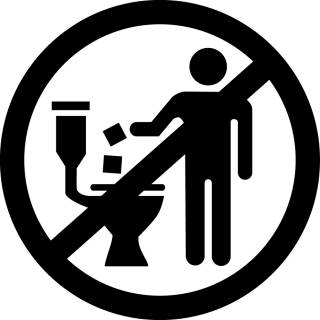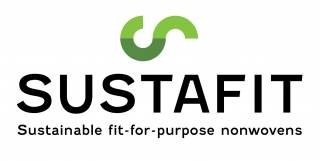Finding most sustainable alternative along the long shelves in the store can be a challenge, as some brands might offer products with green claims without proofs for the claims, and until we get to see the effects of Green Claims Directive7 on the environmental claims of the products, there are a few things consumers can take a look at:
Look for third-party certifications
There are various certifications and labels which act as verifying proofs for evaluation of sustainability. As an example, Forest Stewardship Council (FSC®) is a traceable standard ensuring healthy and responsible forest stewardship. STANDARD 100 by OEKO-TEX® is a “skin-safe” certification which ensures that the textiles are tested for harmful substances, and safe to use on human skin. In addition, labels such as the EU Ecolabel and the Nordic Swan Ecolabel indicate that the product meets specific environmental criteria.

Consider the longevity of the product
Single-use products have higher impact on the environment compared to products that can be re-used or are made to last a long time, and as mentioned in EU Waste Framework Directive, re-use is above recycling, having more positive impact on the environment. Sometimes it can be challenging trying to find a multi-use product as in some products for instance high level of hygiene is needed, but it is good to keep in mind, and think if e.g., disposable face towels could be changed into multi-use wipes that can be washed and re-used multiple time.
Check the materials
Most single-use nonwovens are nowadays made of fossil-based plastics, such as polyester or polypropylene, but fibres from also renewable resources or recycled materials are used increasingly. In addition, in some products chemicals are used in order to e.g., strengthen the material or also used for enhancing the user experience, e.g., as a fragrance. Some of these chemicals can be potentially harmful or harsh, and many brands avoiding the use of these kind of chemicals have mentioned it in the packaging of the product as e.g., “free of harsh chemicals”.
The use of renewable or recycled resources in the packaging of the product is also many times recognizable from the packaging, but it is also good to check the list of ingredients, since e.g., mentioning that plant-based fibres have been used in the product might still mean that a proportion of the materials used are fossil-based.
Here, also important thing is to check the composition of the product. If the product is made 100% of one material (mono-material), it is easier to recycle compared to product composed of many different materials. Although, in many disposable nonwovens layers of variable fibres are needed to create a product with specific features as each layer can offer certain desired functionality, also prolonging the lifetime of the product in some cases.
Consider the product’s end-of-life options
Look for products that are biodegradable, compostable, or recyclable. Many sustainable brands are willing to guide and educate consumers how to recycle the product in its end of life, and it should be easily read from the packaging or instructions of the product. When talking about disposable nonwovens, particularly wet wipes, majority of these are not flushable, and many might be unaware of this. EDANA has helped this by promoting the use of “Do not flush” -symbol in the packaging of nonwovens to educate consumers and prevent clocking of toilets or sewers.8

Collaborative efforts to drive innovation towards more sustainable solutions
Sustainability can be seen more as a demand than preference in many applications nowadays, which drives decisions of many designers, manufacturers, stakeholders, and end-users. We have several laws and regulations demanding changes towards more sustainable practices in various application areas, but it might be challenging to find the best or most sustainable way to act, and in many cases, there might be no proper guidelines for improving sustainability. Therefore, research is needed to find more comprehensive approach to understand what the most sustainable solutions are.
In SUSTAFIT project, the research organizations (TAMK, VTT and Aalto University) are working on this issue and aiming to add knowledge on more sustainable practices in nonwovens, and support businesses to develop more sustainable nonwovens and support in choosing sustainable raw materials and production technologies. The information will also help the end-users to make more conscious choices.
The aim of the project is to produce new theoretical and experimental information on sustainable strategies and practices in different nonwoven segments, and this will be a one step further to create more sustainable nonwoven applications, and hopefully broaden the choices of sustainable nonwovens in the long run.9
The Did you know – News series is a part of the SUSTAFIT project, and in the series, we are diving deeper into different topics regarding nonwovens and sustainability. As seen in the first part of the Did you know -series, regulations act as important tools improving sustainable practices, particularly in the fast growing single-use nonwoven segments, and understanding why and what kind of regulations are driving to lower the environmental impacts is essential to make a transition towards more sustainable industry. Knowledge-transfer and collaboration in every step of the value chain is needed in order to reach more sustainable practices, and as mentioned, end-users are one important group helping in the process. Fortunately, consumers are getting more aware of the choices they make, but at times it can be challenging trying to find which is more sustainable option among numerous brands and products.
Stay tuned for practical tips, and upcoming topics to learn more about sustainability and nonwoven sector!
Additional information:
Noora Raipale
Research Scientist, M. Sc. (Tech)
Textile and Nonwoven Materials
VTT Technical Research Centre of Finland Ltd
Tel. +358 50 526 7749
Text: Noora Raipale
- EDANA. Nonwovens markets, facts and figures. Accessed March 22, 2023. Available at: https://www.edana.org/nw-related-industry/nonwovens-markets.
- S&P Global. Chemical Economics Handbook – Nonwoven Fabrics.; 2020. Accessed March 22, 2023. Available at: https://www.spglobal.com/commodityinsights/en/ci/products/nonwoven-fabrics-chemical-economics-handbook.html
- Directive (EU) 2019/904 of the European Parliament and of the Council of 5 June 2019 on the reduction of the impact of certain plastic products on the environment. 2019.
- EDANA. Single-Use Plastics Directive. Accessed March 22, 2023. Available at: https://www.edana.org/how-we-take-action/product-stewardship/single-use-plastic-directive
- Directive 2008/98/EC of the European Parliament and of the Council of 19 November 2008 on waste and repealing certain Directives. 2008.
- European Commission. EU Strategy for Sustainable and Circular Textiles. 2022.
- Proposal for a Directive of the European Parliament and of the Council on substantiation and communication of explicit environmental claims (Green Claims Directive). 2023.
- EDANA. Flushable wipes. Accessed March 22, 2023. Available at: https://www.edana.org/how-we-take-action/product-stewardship/flushability.
- Ylli H. Finnish academia and companies lead the way towards sustainable nonwoven products in SUSTAFIT research project. TAMK. Accessed March 22, 2023. Available at: https://www.tuni.fi/en/news/finnish-academia-and-companies-lead-way-towards-sustainable-nonwoven-products-sustafit




